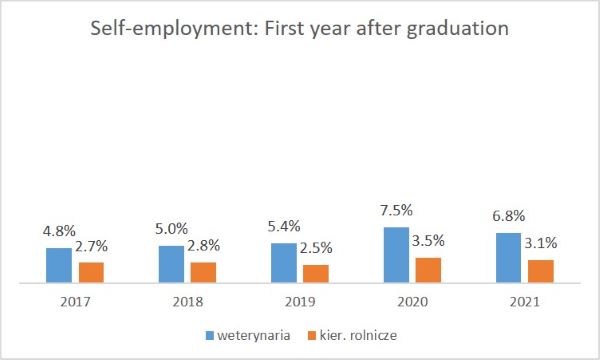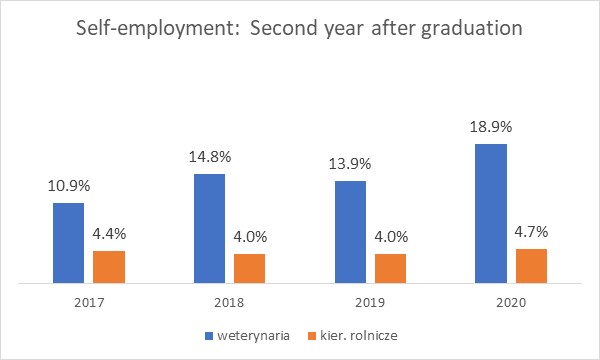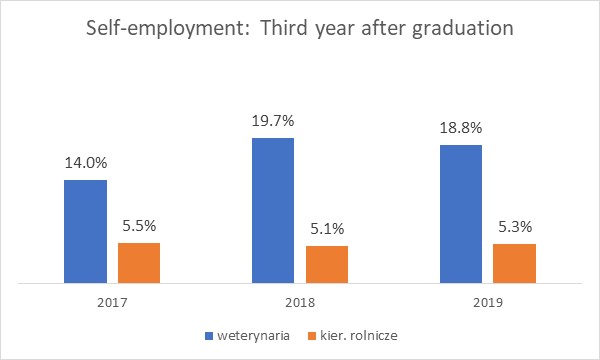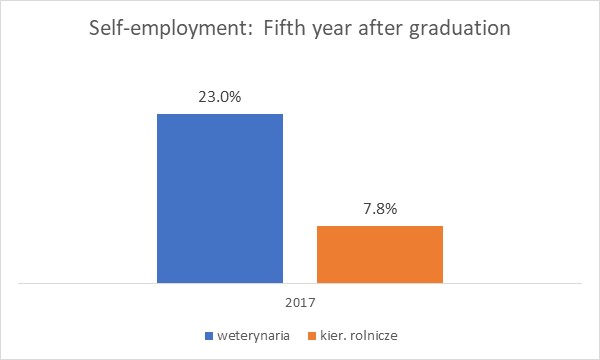
The Polish Graduate Tracking System (ELA) enables the unique characteristics to be explored that determine the career paths of graduates in the newly established field of veterinary sciences, which has been recently been separated from agricultural sciences. This severance offers an opportunity to compare the professional success of the graduates of the domains to analyse whether disparities exist in their circumstances.
Although ELA cannot yet provide any information on the graduates who majored in the newly-established domain of veterinary sciences, some data is available on those who pursued long-cycle programmes when veterinary sciences remained a discipline of agricultural sciences. The data pertaining to the circumstances of the long-cycle master’s graduates will be compared to the achievements of those in agricultural sciences who pursued second-cycle programmes (earned master's degrees). To verify the consistency of the differences in the long term, our analysis integrates the relevant rates for graduates who completed their education in 2017 or later.
The analysis uses two basic ELA rates: the relative earnings rate (RER) and the relative unemployment rate (RUR). These help us to compare the circumstances of different cohorts of graduates. Aware of how common the practice of self-employment among veterinarians is, we have also analysed how many veterinary graduates work for themselves.
Earnings
The first characteristic that is usually compared in the labour market is graduates' earnings, which are measured using the RER. The charts below compare the RER for veterinary graduates and those of all other graduates in agricultural sciences, up to five years following graduation (each consecutive year comprises fewer cohorts of graduates due to the time that has passed since their graduation).
The charts illustrate the differences between the earnings of young veterinarians and those of other graduates of agricultural sciences. In the early stages of their careers, veterinarians earn less than other agricultural science graduates. The variance in income between veterinarians and other graduates of agricultural sciences lessens during the first five years after graduation, and becomes virtually nonexistent by the fourth and fifth years.


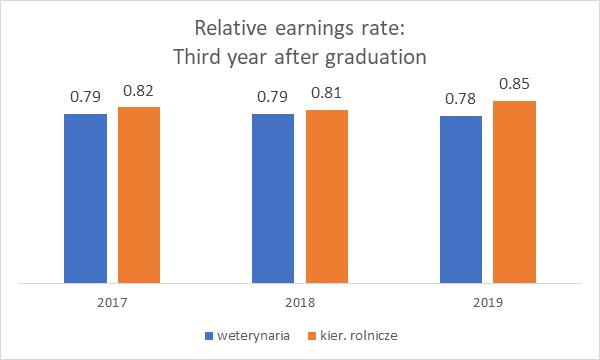


Unemployment
The second characteristic that has been used to compare the graduates of veterinary sciences and agricultural sciences is the relative unemployment rate (RUR).
In the early stage of their careers, a considerable share of veterinary science graduates are unemployed. For instance, the rate of unemployment among cohorts who earned their degrees during the COVID–19 pandemic was more than four times higher than that in their respective powiats. However, the unemployment rate among veterinarians drops rapidly to below the average unemployment rate in their places of residence. From then on, unemployment among veterinarians is low, compared both to agricultural science graduates and to the total graduate population.
A plausible explanation for why a significant number of young veterinarians register as jobseekers in the early stages of their careers is that they attempt to accumulate the necessary resources to enhance the beginnings of their professional pursuits. Jobless young veterinarians are offered an array of instruments as part of the so-called active labour market policies, which assist them in establishing their own businesses. As discussed below, self-employment sets young veterinarians apart from other groups of graduates.

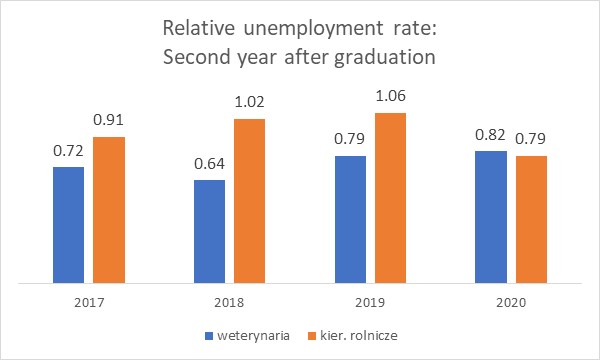
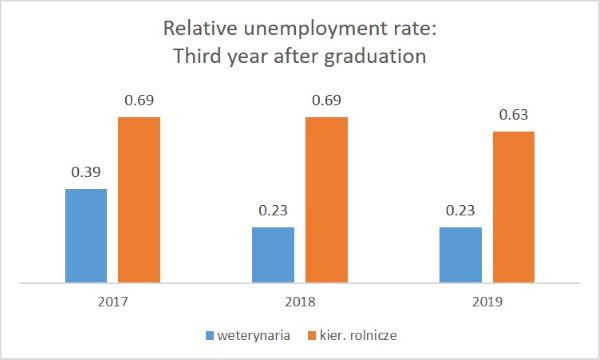
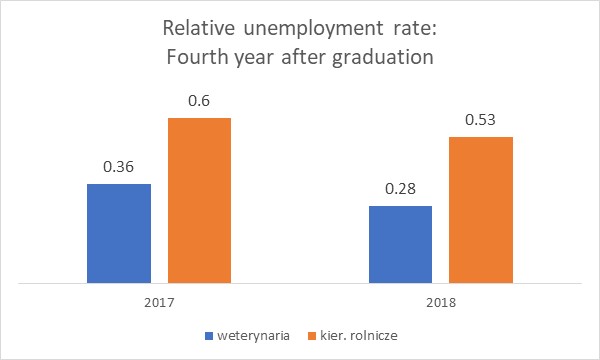
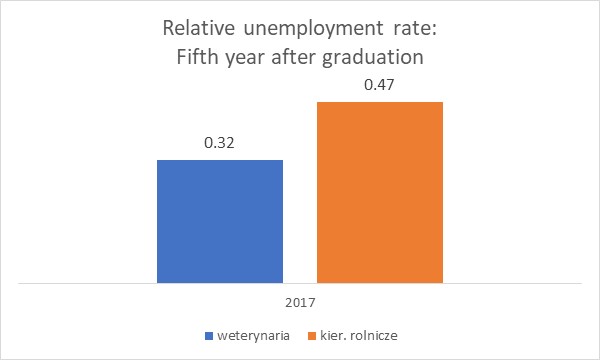
Self-employment
The decision to become self-employed is the third unique attribute that separates veterinary graduates from their counterparts who have majored in agricultural sciences.
Veterinarians demonstrate stronger preferences for working for themselves. This difference is noticeable immediately, in the first year after graduation. Slightly higher interest in this form of activity among graduates was also observed between 2020 and 2021. In the second and consecutive years, the share of self-employed veterinarians increases. For example, nearly 25% of the 2017 and 2018 veterinary graduates were self-employed in the fifth and fourth year, respectively, following their graduation. This rate is considerably lower among other agricultural science graduates.
